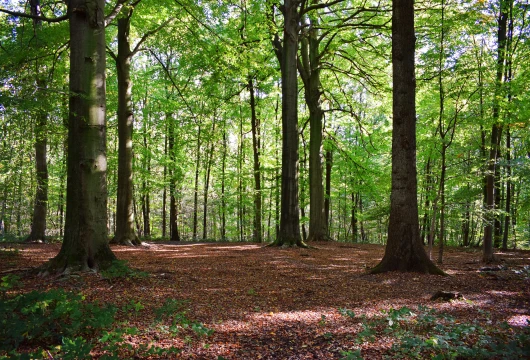Tree Conservation Drive Gains Legal Momentum
In a resounding call for environmental protection, activists and residents have moved the National Green Tribunal (NGT) to prevent the felling of over 200 mature trees in Navi Mumbai’s chemical belt. The initiative, which aims to safeguard the region’s green cover and preserve its open spaces, is gaining widespread support as an emblem of sustainable urban development.
This proactive step underscores the growing importance of tree conservation in urban areas, where industrial and commercial growth pressures often take precedence over ecological balance.
Protecting Trees Amid Urban Development
The controversy began when the Maharashtra Industrial Development Corporation (MIDC) allocated a plot of land—dominated by large and small trees—to a Project Affected Person (PAP) to develop a hotel. The area within Navi Mumbai’s chemical zone is one of the few remaining green spaces.
Concerned citizens and environmental groups quickly mobilized to address the issue, petitioning the NGT to halt construction. According to the petitioners, the plot represents a critical green lung for the area, providing ecosystem services such as carbon sequestration, air purification, and biodiversity support.
One petitioner explained, “We are not against development, but it must not come at the cost of nature. Cutting down these trees will have long-term environmental consequences for the entire community.”
The Role of the NGT in Tree Conservation
The National Green Tribunal has played a pivotal role in protecting India’s environment by providing a platform for legal recourse. In this case, the petitioners have urged the tribunal to intervene and ensure compliance with environmental regulations.
Key issues raised in the petition include:
1. Violation of Environmental Norms: The plot allocation for commercial use allegedly disregards guidelines protecting green spaces in urban industrial areas.
2. Lack of Public Consultation: Despite its significant environmental impact, local stakeholders were reportedly not consulted before the project’s approval.
3. Potential Biodiversity Loss: The area is home to various native plant species and serves as a habitat for birds and small animals.
The case reflects a broader shift in public sentiment, with communities increasingly advocating for sustainable urban planning and balanced growth.
Why Tree Conservation Matters
Urban green spaces are vital for maintaining ecological and social well-being. Trees improve air quality by absorbing pollutants and play a critical role in regulating temperature, reducing noise pollution, and supporting biodiversity.
In Navi Mumbai, the 200 trees in question are part of a larger ecosystem that buffers industrial emissions prevalent in the chemical belt. Losing this green cover could exacerbate environmental challenges, including air and water pollution.
Moreover, open spaces contribute to residents’ mental and physical health by offering areas for recreation, relaxation, and community gatherings. Preserving these spaces aligns with the principles of sustainable urban living.
A Community United for a Cause
What makes this initiative particularly inspiring is the unity and determination of Navi Mumbai’s residents. Schools, environmental NGOs, and local businesses have joined forces to raise awareness about the importance of tree conservation.
Awareness campaigns, social media drives, and community meetings have garnered widespread attention, bringing the issue into the public eye. Trending hashtags such as #SaveNaviMumbaiTrees and #GreenFutureNow highlight the power of collective action in driving meaningful change.
A local student participating in the campaign remarked, “Saving these trees isn’t just about today; it’s about ensuring a livable future for us and the generations to come.”
Balancing Development and Sustainability
While development is crucial for economic growth, it must be pursued responsibly. Navi Mumbai’s situation underscores the need for urban planning that harmonizes infrastructure expansion with environmental preservation.
Alternatives proposed by the petitioners include:
- Reallocating the Hotel Project: Identifying a less ecologically sensitive plot for the development.
- Implementing Green Building Practices: Ensuring the construction aligns with sustainability standards, such as retaining existing trees and incorporating green architecture.
- Compensatory Afforestation: Planting multiple trees for every tree removed, although this is seen as a last resort.
These measures could serve as a model for other cities facing similar challenges.
The Road Ahead
The case is under review by the NGT, and a decision is expected in the coming months. Regardless of the outcome, the movement to protect Navi Mumbai’s trees has sparked a broader conversation about the importance of urban greenery.
Balancing economic ambitions with environmental stewardship will remain a critical challenge as cities expand. Initiatives like this demonstrate that sustainable solutions are possible when communities, policymakers, and businesses work together.
How You Can Contribute
Protecting the environment is a collective responsibility. Here are some ways you can support tree conservation efforts:
- Advocate for Green Policies: Engage with local authorities to prioritize sustainability in urban planning.
- Participate in Tree Plantation Drives: Contribute to reforestation initiatives in your area.
- Raise Awareness: Use social media platforms to amplify conservation campaigns and educate others about the importance of green spaces.
Individuals can make a significant impact on preserving the planet’s natural resources by taking small but meaningful steps.
For more in-depth analysis and inspiring climate news, click here.

